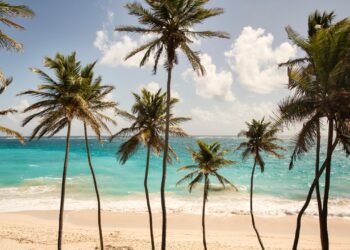On our last full day, it was finally time to see the dragons. The main entry point is the rangers station on Komodo, where a large population of Komodo dragons can be found. For millennia they’ve coexisted with the local Ata Modo ethnic group, whose name translates to “forest people of the dragon.” Believing themselves to be descended from the same ancestral set of twins as the dragons, the Ata Modo long left a portion of what they gathered from fishing, hunting, and farming for their reptilian relatives. When the park was established in 1980 to protect the dragons, fishing and hunting were prohibited within its boundaries. Since then, many of the Ata Modo have taken jobs in tourism, as guides and as crew members on luxury boats. Komodo, along with Borobudur and Bali, is an Indonesian tourism hot spot, and there’s no doubt the park brings much-needed income to East Nusa Tenggara, one of Indonesia’s poorest provinces. But there is still work to be done to balance the needs of the local ecosystem and the local economy.
Our guide, Rahman, his face etched by sea and sun, smiled wickedly as he told us that, even with their stubby legs, dragons can sprint 12 miles per hour, take down fully grown water buffalo, and smell blood from more than six miles away. He waved a forked stick to fend off any encroaching reptiles, but I still kept my eyes peeled for unexpected ambushes.
Though the paths we walked were well-trodden, the surrounding jungle felt primeval. Strange sounds echoed here and there. Shadows darted behind the enormous trees. We saw boar, jungle fowl, cockatoos, a sea eagle circling the cloudless sky. But no dragons. Then, as we reached the beach, Rahman called out. Ambling toward us was a young male, around seven feet long, its claws sharp, its jaws dripping with drool. It was thrilling to be so close to a Komodo dragon in the flesh—even if we were the same distance from the souvenir shop.
Before we started our final cruise back to Labuan Bajo, Yoyok suggested a last swim in the marine-life-rich waters around Gili Lawa Darat Island, a few miles north of Komodo. I gave myself up to the waves as I drifted above the reef, gazing through my snorkel mask. Below was a dizzying spectrum: harlequin flashes of cobalt and hot pink, gold and silver, as clown fish, trevallies, and parrotfish zigzagged by in a flash. And, gliding serenely through the slip stream like some ancient, scrimshawed monolith, a critically endangered white hawksbill turtle stroked past.
I clambered back onto the tender, flush with joy and the feeling that the world still held a few secrets. I had come to look for the dragons but ended up discovering more.
Indonesia by phinisi
Peak time to cruise around Komodo National Park is May to September, outside the monsoon season. Vela also visits several other Indonesian destinations throughout the year, depending on weather conditions and availability.
This article appeared in the July/August 2023 issue of Condé Nast Traveler. Subscribe to the magazine here.














